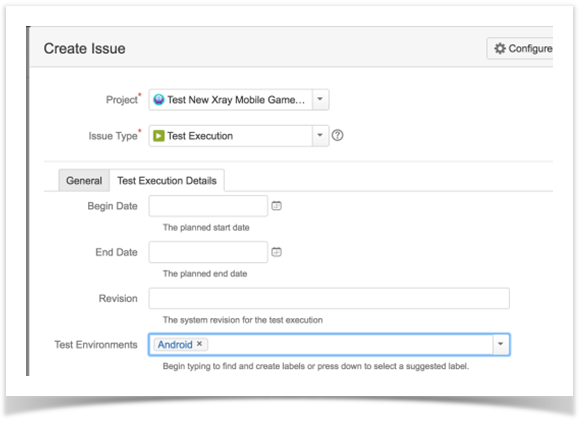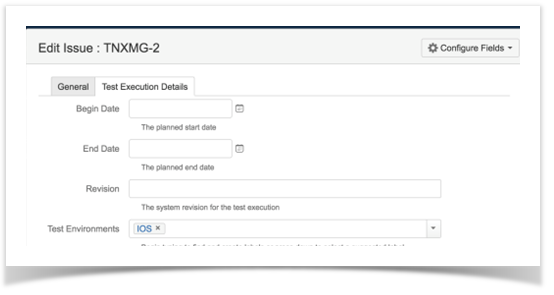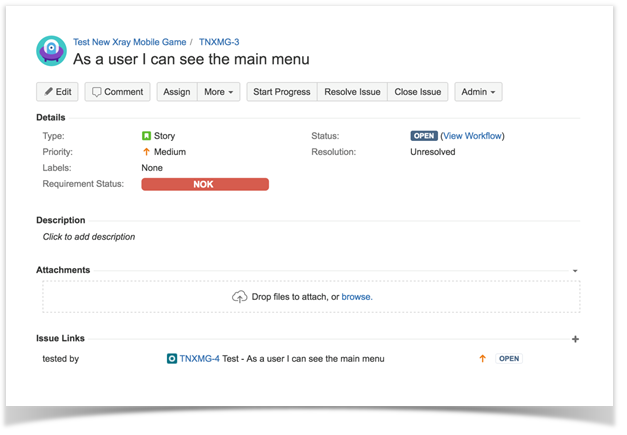Page History
...
When creating a Test Execution, you must set the Test Environment in which the execution will be executed on. You can use this field as a simple label: just add the environment or reuse a previously created one.
Test Execution for “Android” Test Environment
Test Execution for “iOS” Test Environment
...
You can see the Test Environments column in your Test Runs table so you can distinguish each execution of the Test between the different environments.
The Test has been executed in both Test Environments (a Test Execution per Test Environment).
...
Now, let’s check our Requirement Status: will see that it’s NOK because the Test has failed for one of the environments.
Tips
- Use Test Environments if you really need to
- If you do use, then preferably assign just one Test Environment per Test Execution
- You may filter Test Environments in your Test Executions panel to see how the executions are doing, per environment
- Avoid cloning Tests if you want to run them on different environments, that's the reason behind Test Environments so maybe it's best to use them instead
...








